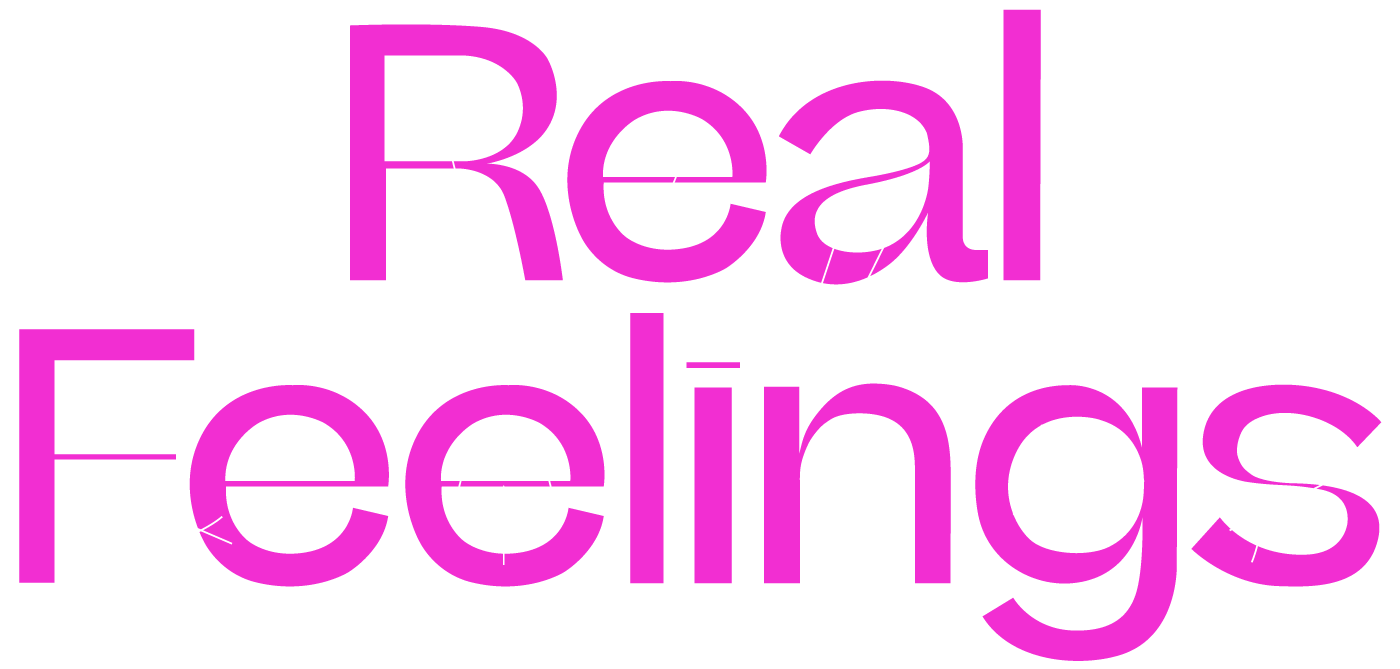
| Nr. | Title |
|---|---|
| 5 | One of Them Is a Human |
| 2 | Everything is OKAY |
| 18 | Happiness is the only true emotion |
| 10 | The grass Smells So Sweet |
| 1 | Vibe Check |
| 9 | Streamers |
| 12 | T3511 |
| 8 | Terminal Beach |
| 3 | How happy a Thing can be |
| 6 | Synthetic Seduction |
| 14 | Solitary Survival Raft |
| 17 | Encyclopedia of Emotion |
| 11 | Renderlands |
| 7 | Facial Action Coding System |
| 13 | Co(AI)xistence |
| 15 | Elephant Juice |
| 4 | Test Studies |
| 19 | Mind |
| 16 | Adversarial Feelings |
| 20 | Commercial Break |
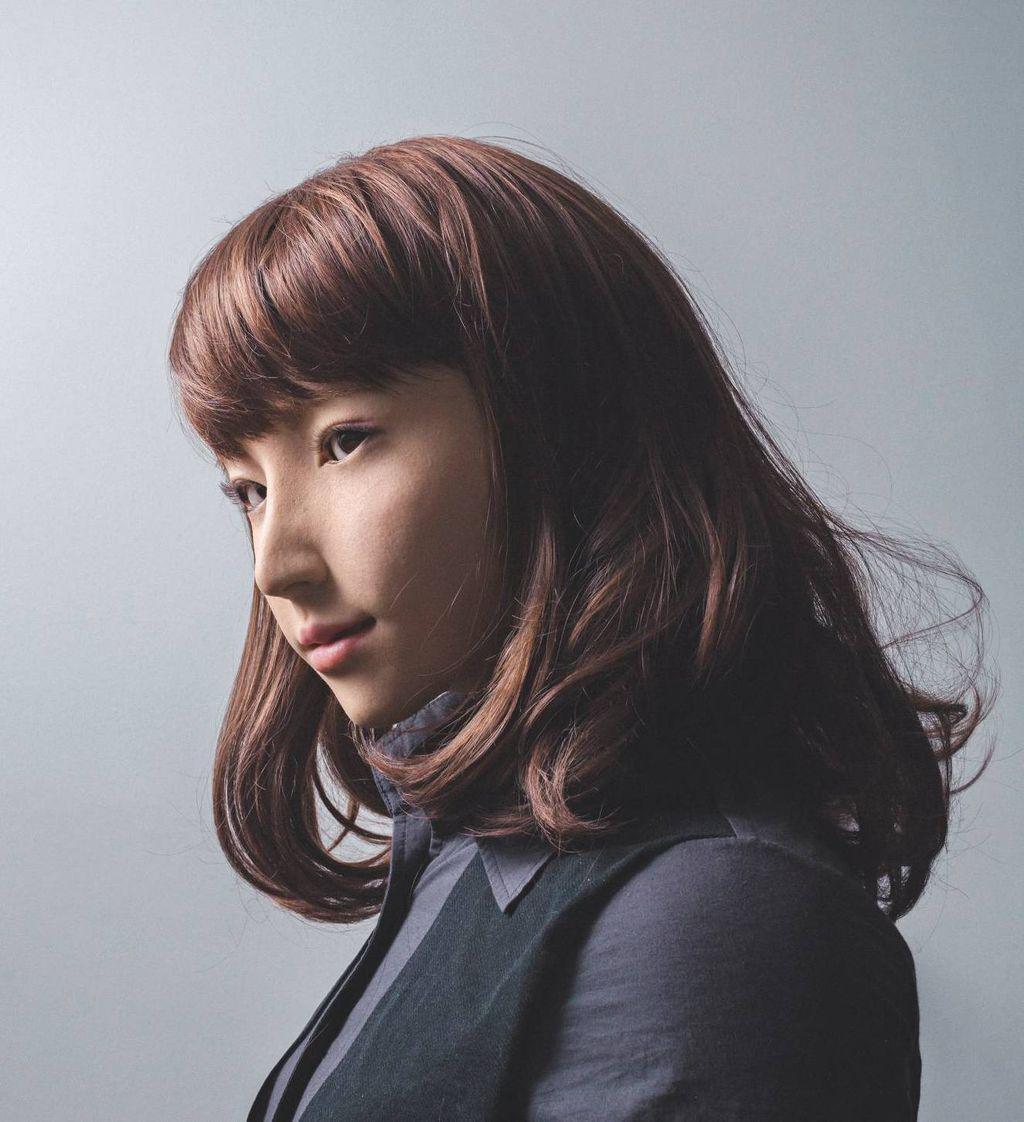
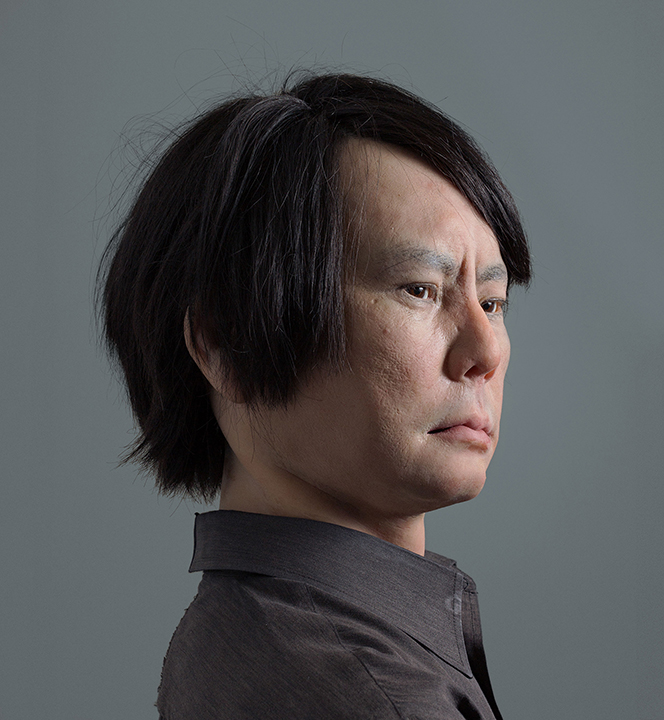
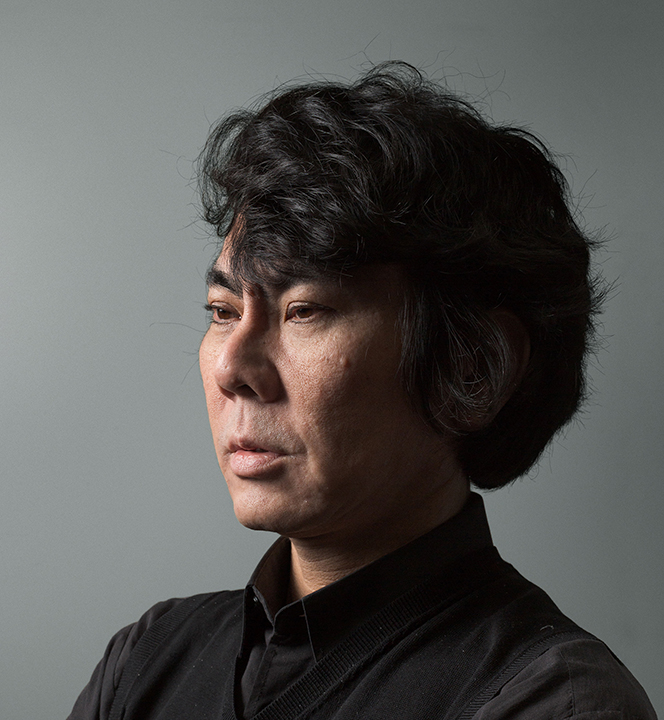
Majia Tammi
One of Them Is a Human, 2017
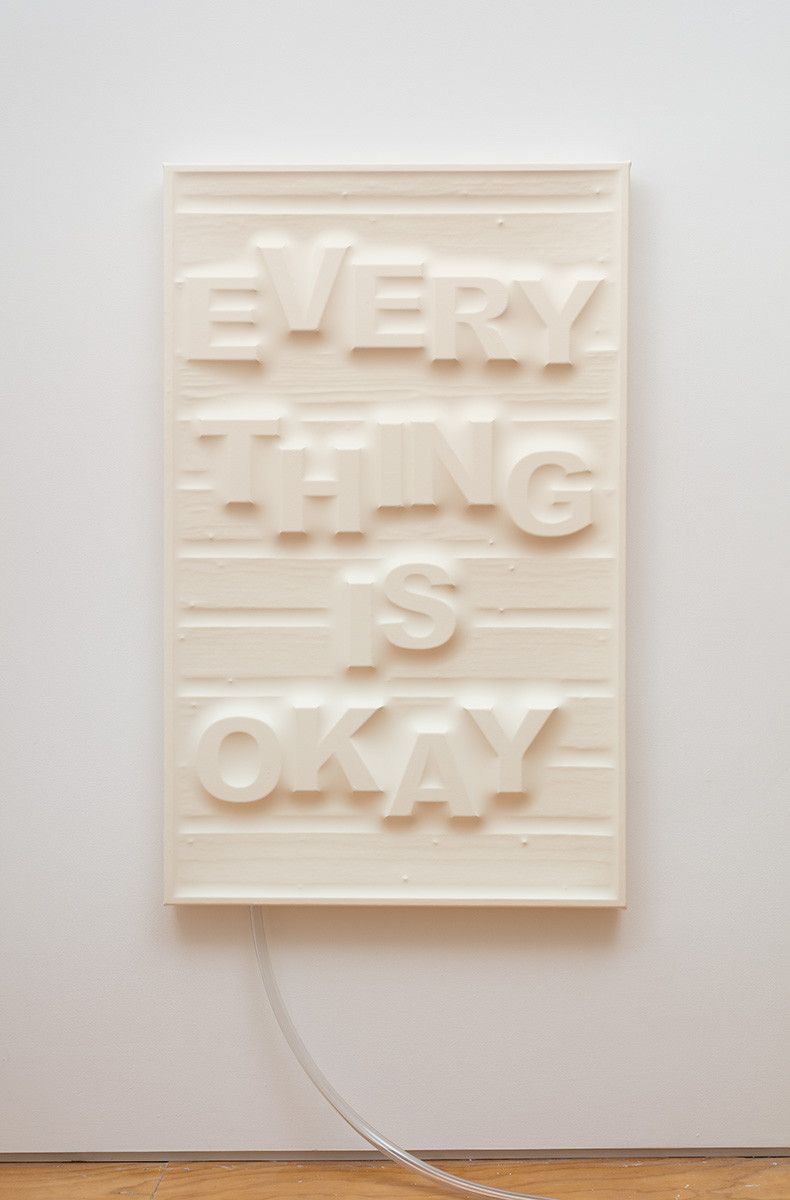
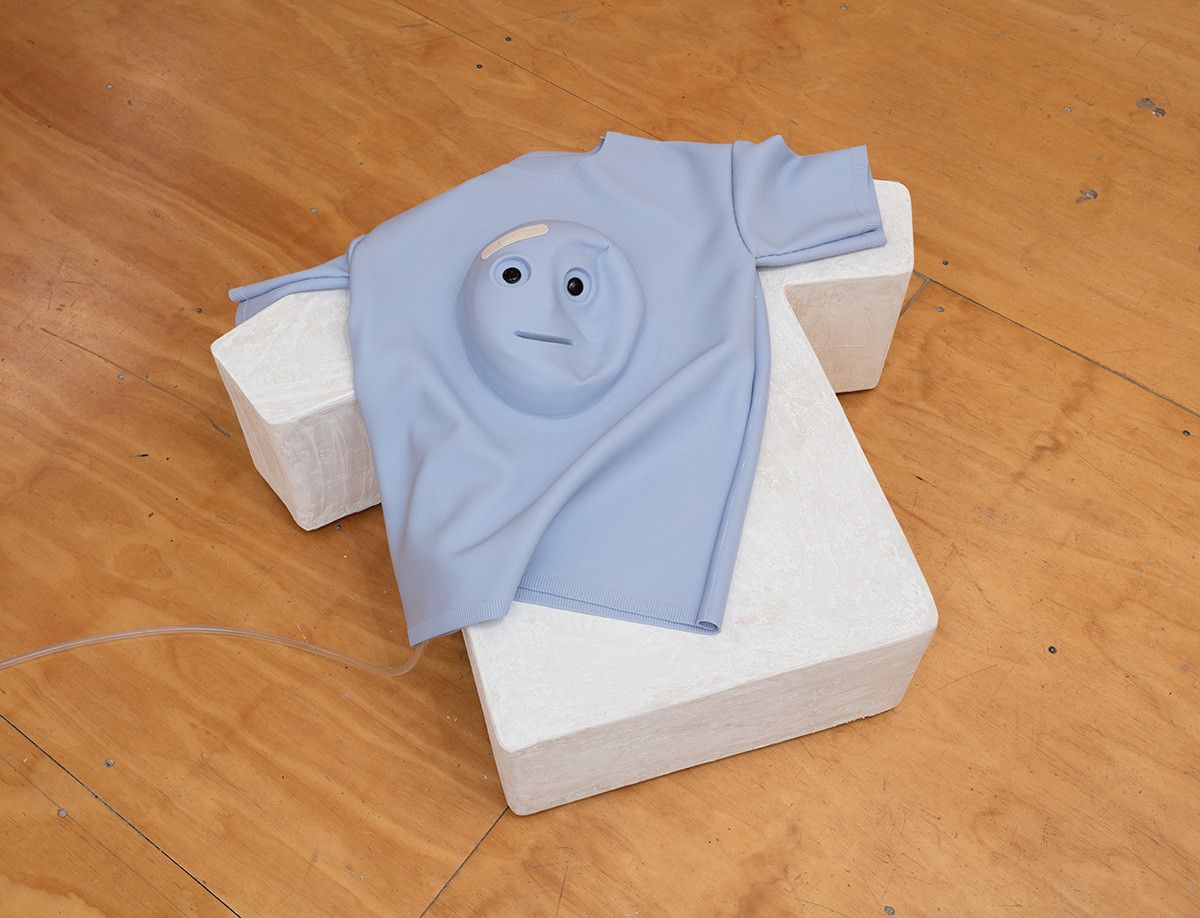
Antoine Catala
Everything is OKAY: Season 2, 2018

Clément Lambelet
Happiness is the only true emotion, 2019
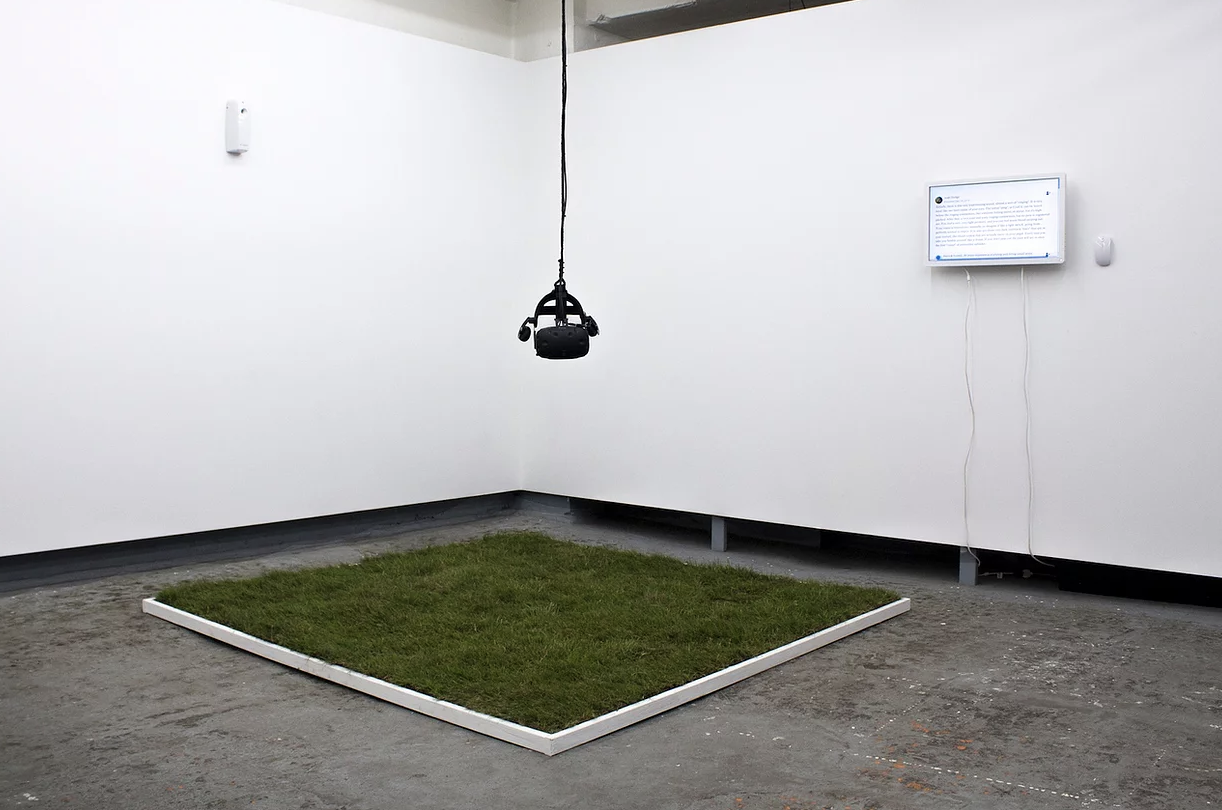
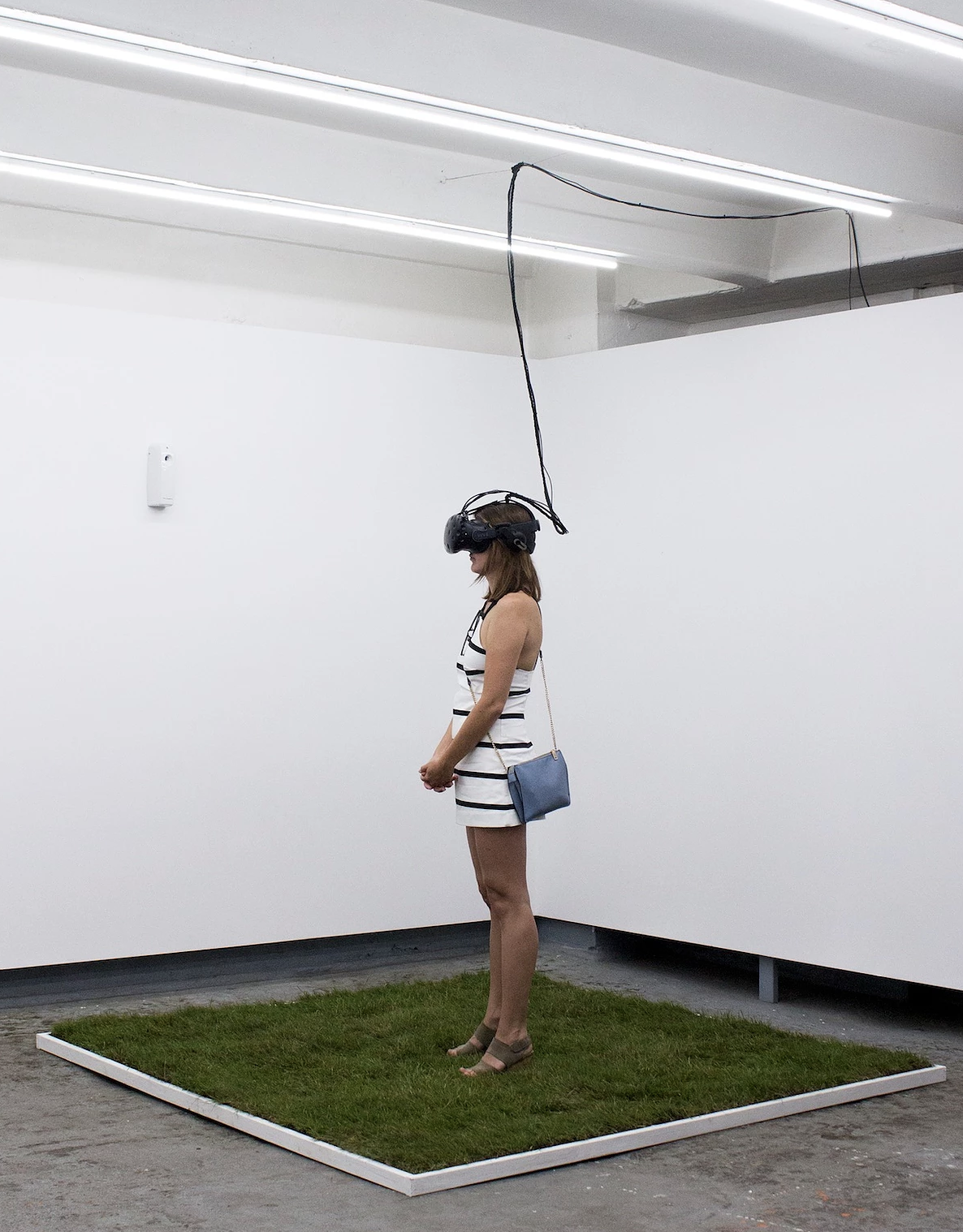
Dani Ploeger
The Grass Smells So Sweet, 2018

Lauren Lee McCarthy & Kyle McDonald
Vibe Check, 2020
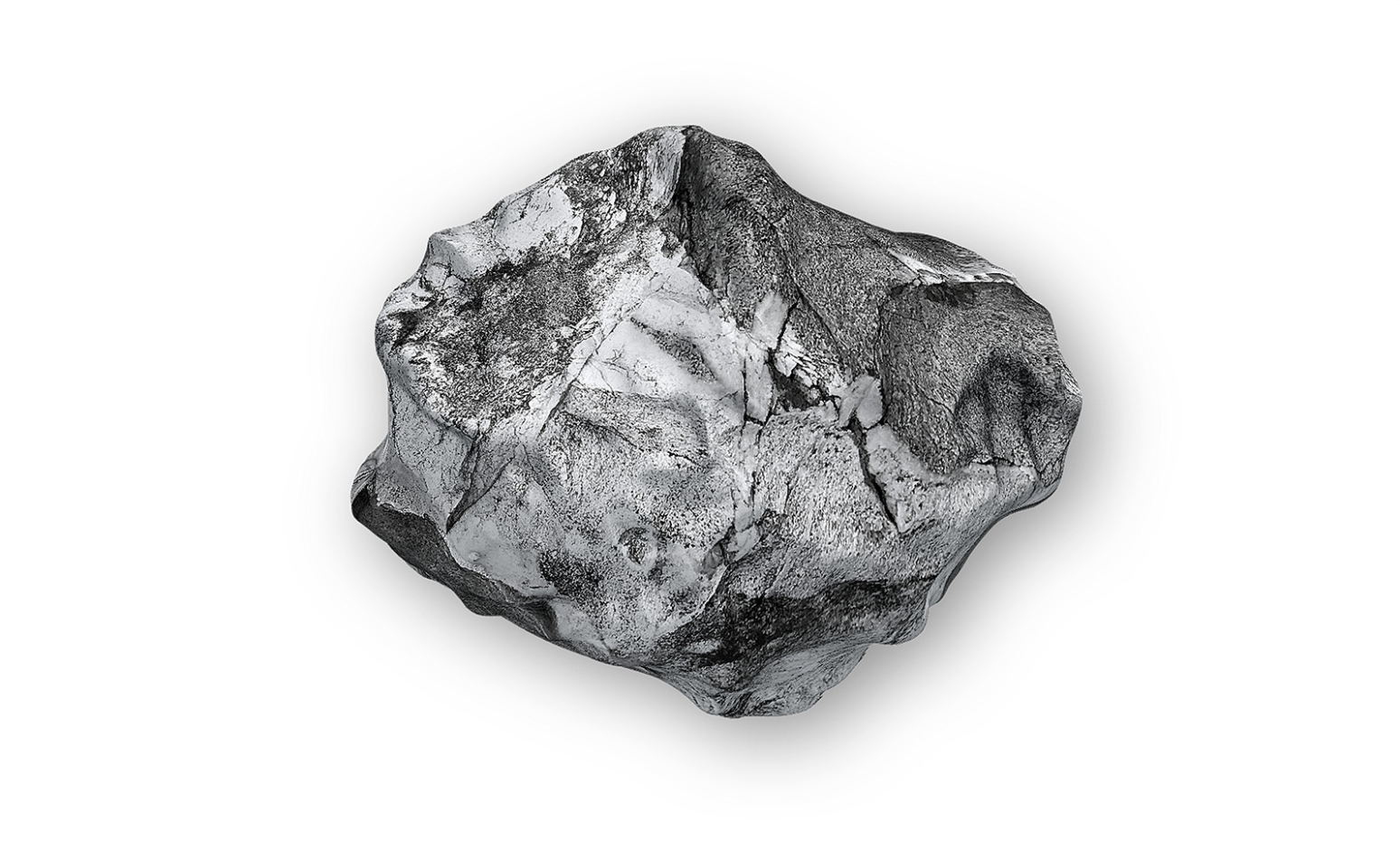
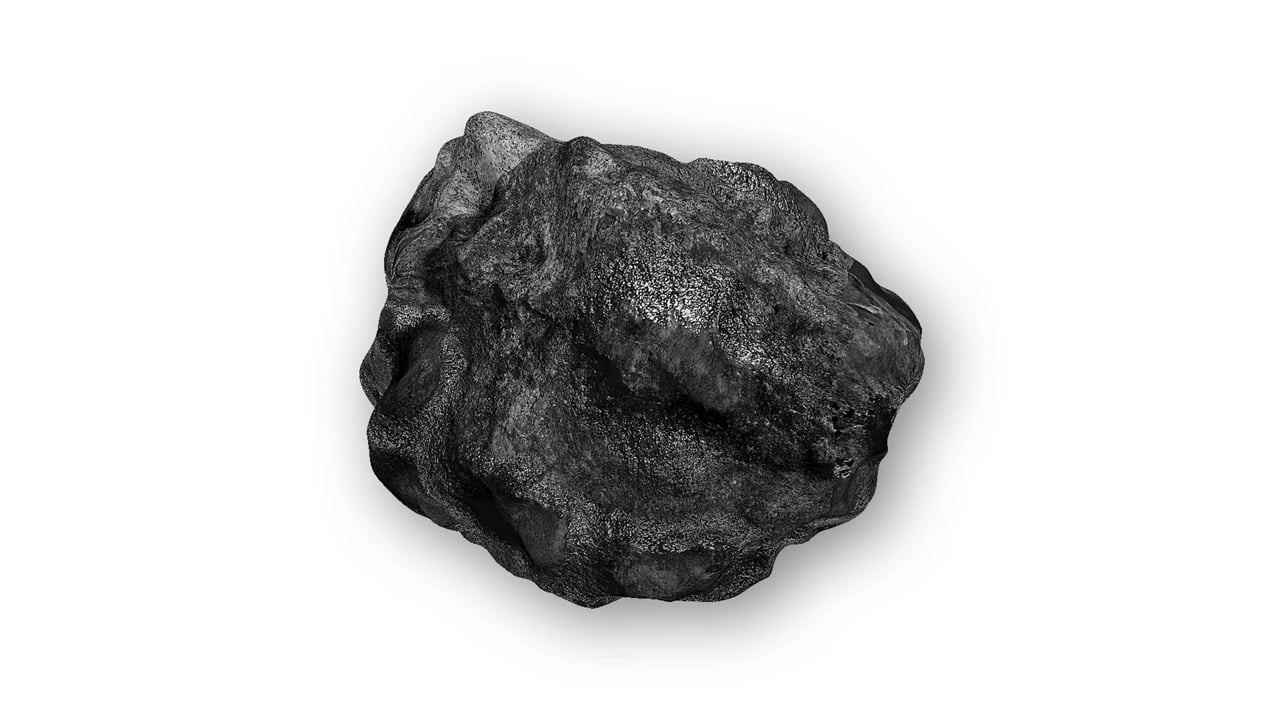
Esther Hunziker
Streamers, 2018
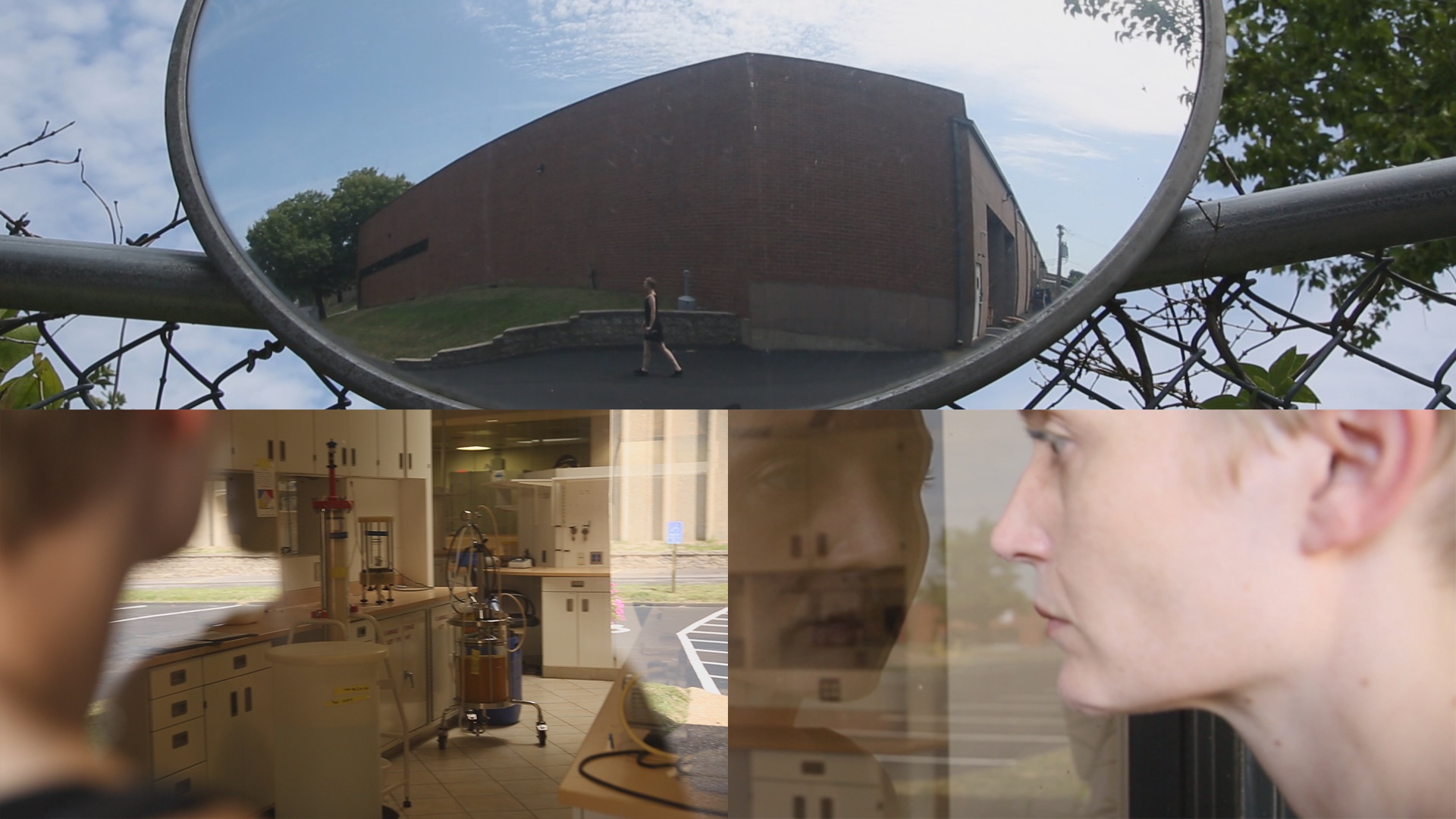
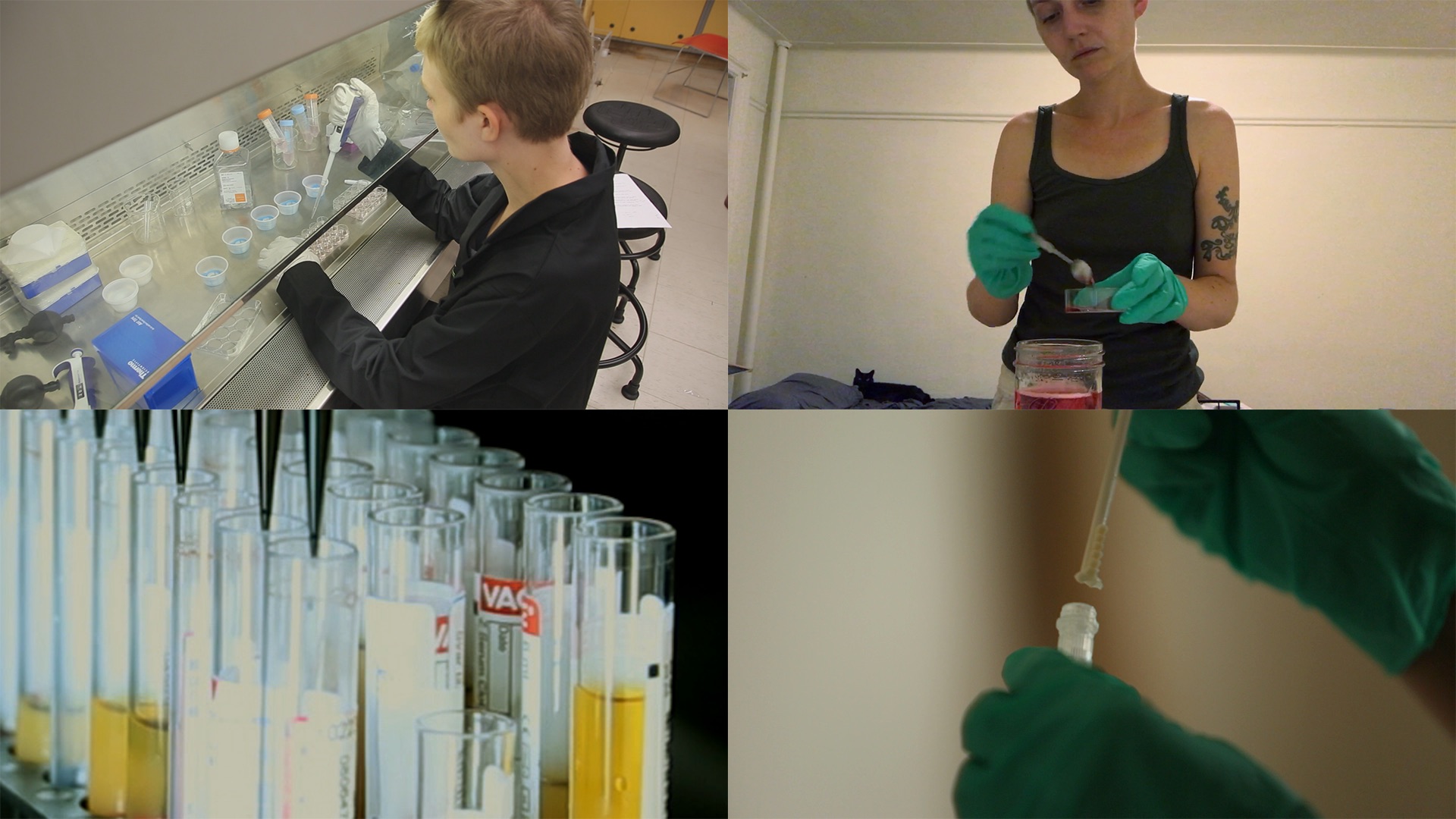
Heather Dewey-Hagborg
T3511, 2019
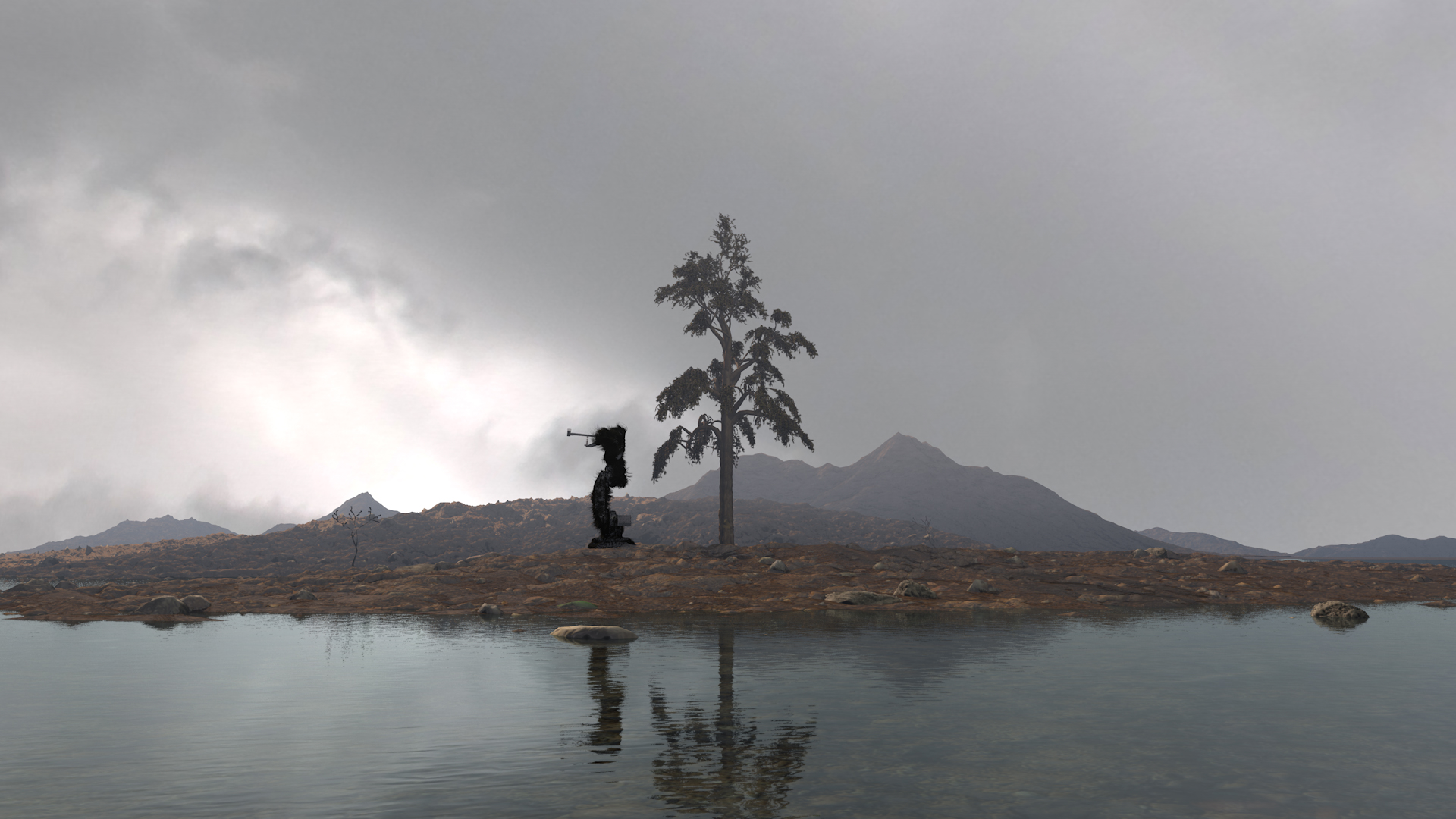
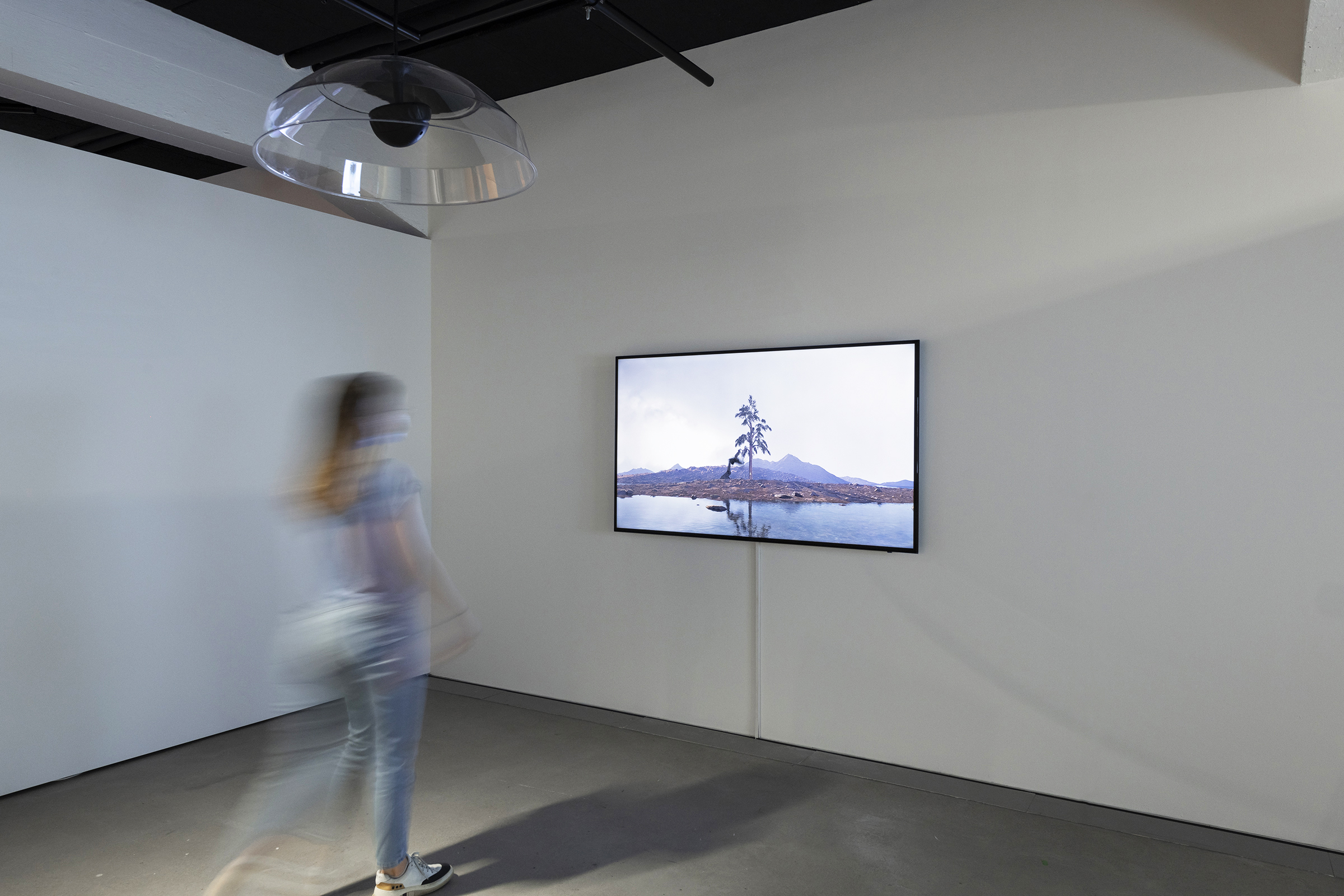
Troika
Terminal Beach, 2020
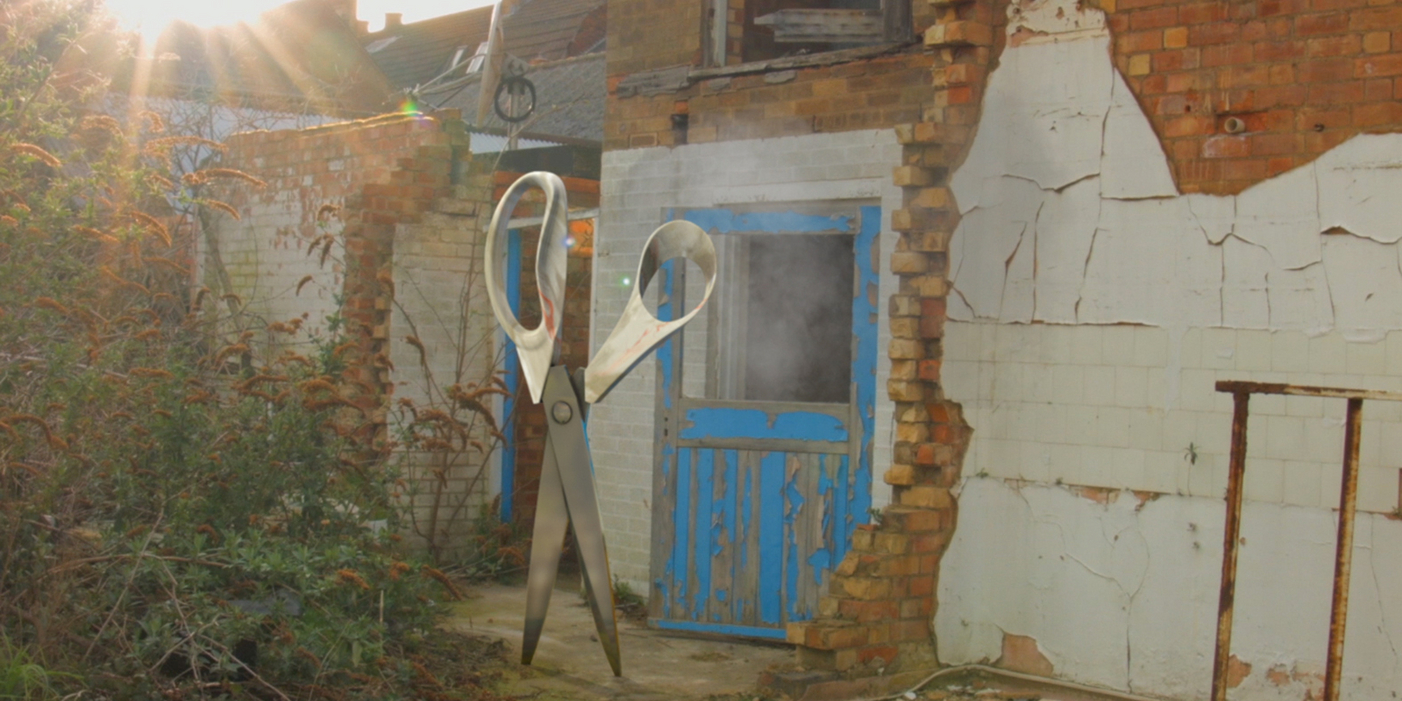
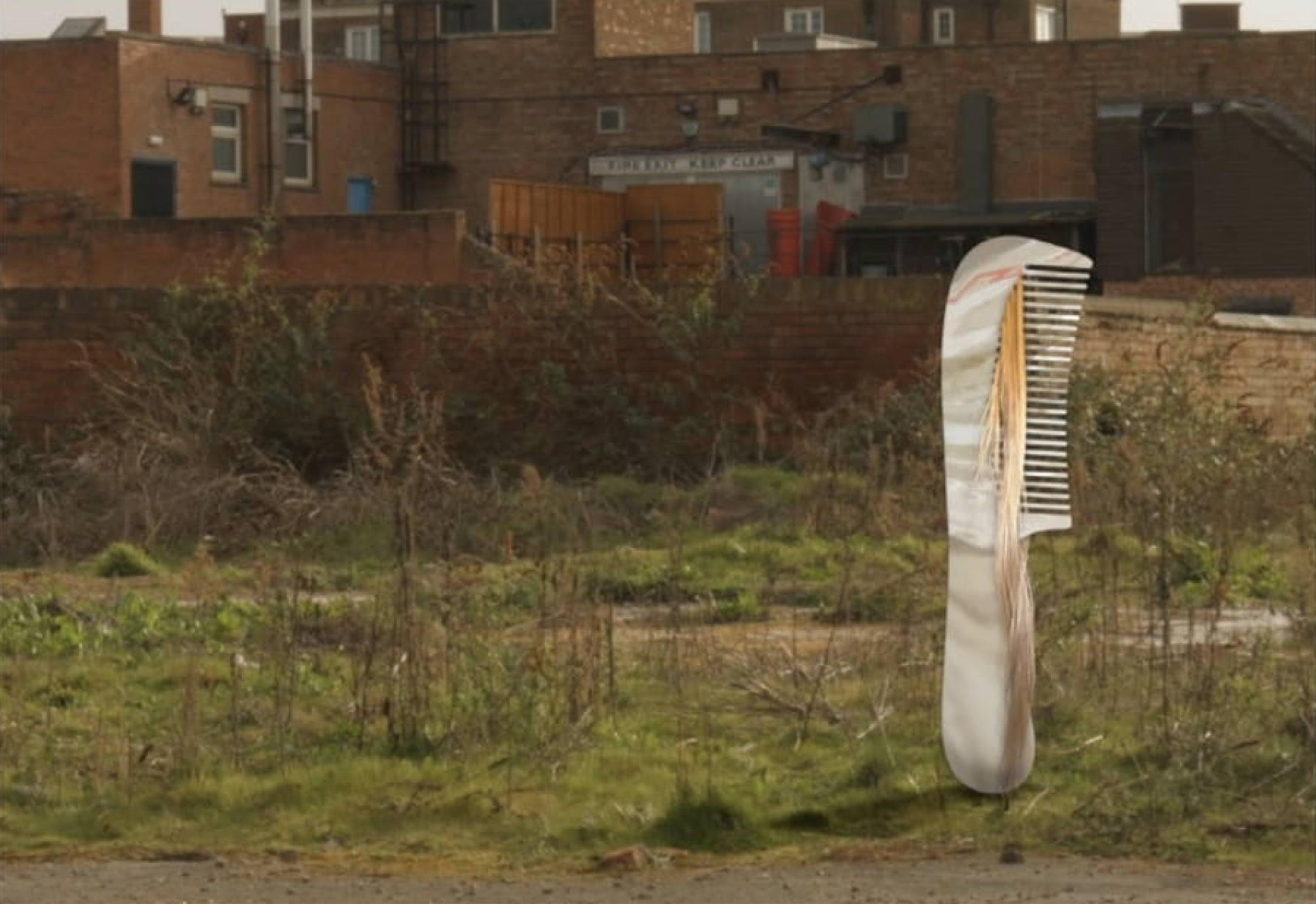
Cécile B. Evans
How happy a Thing can be, 2014
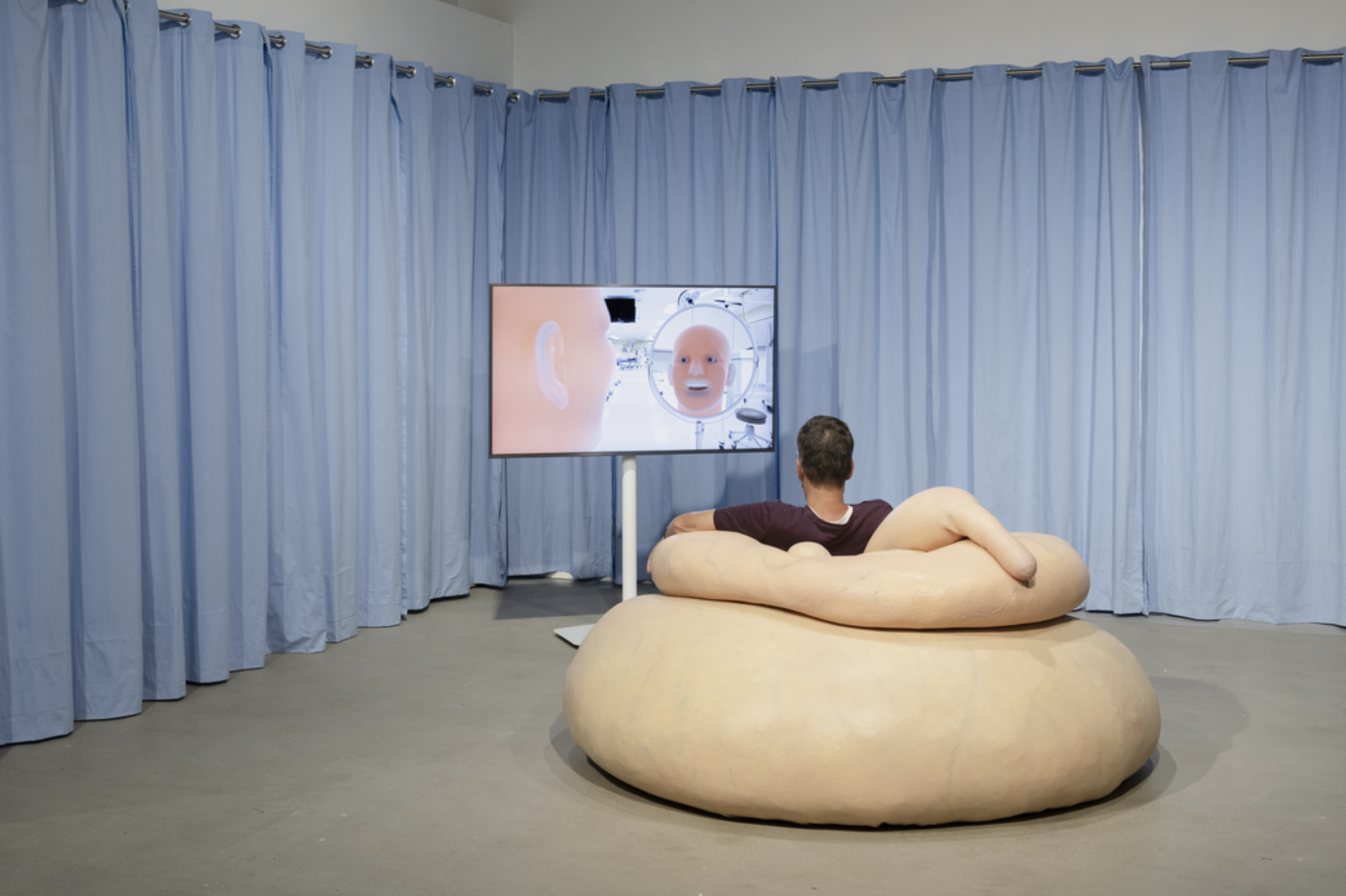
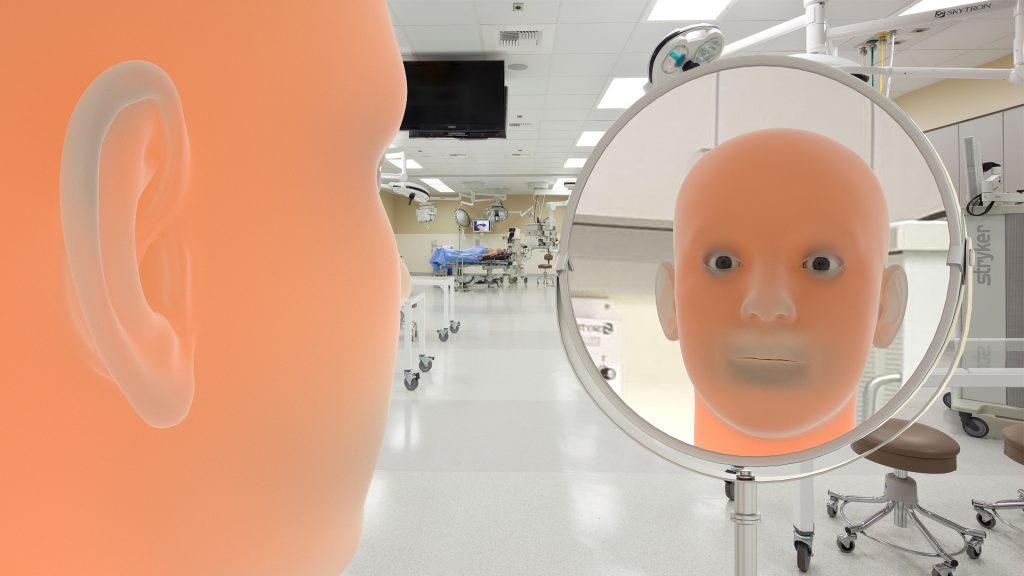
Stine Deja & Marie Munk
Synthetic Seduction, 2018

Lucy McRae
Solitary Survival Raft, 2020
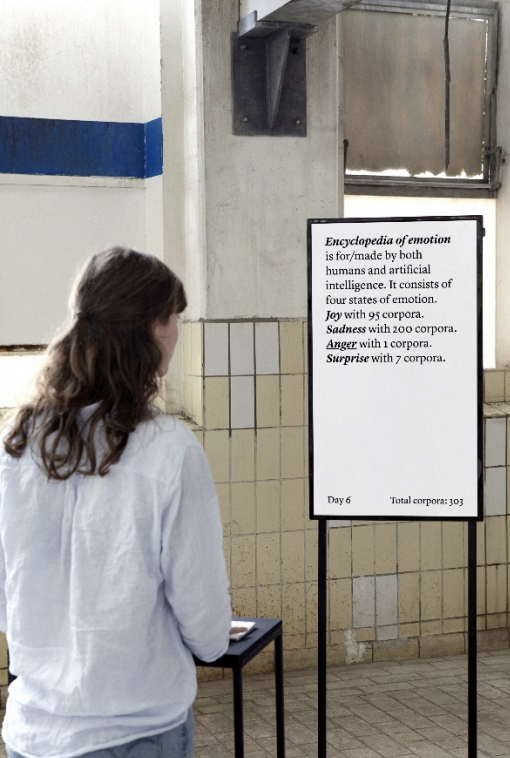
Seokyung Kim
Encyclopedia of Emotion, 2018
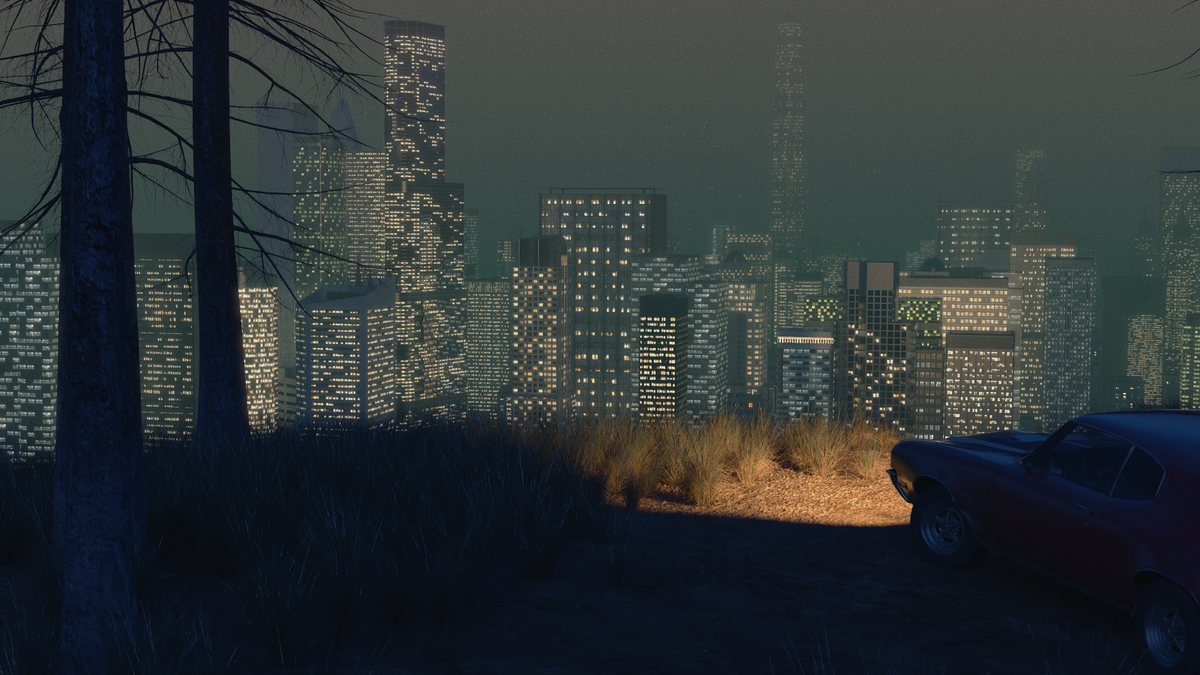
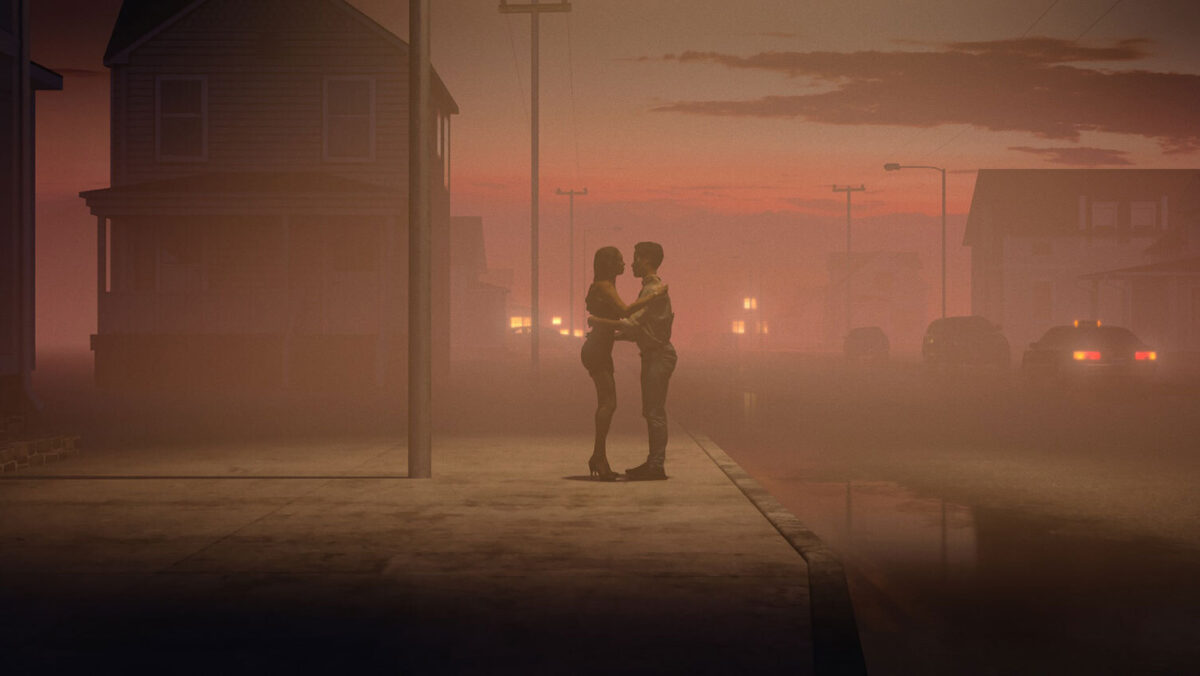
Liam Young
Renderlands, 2017
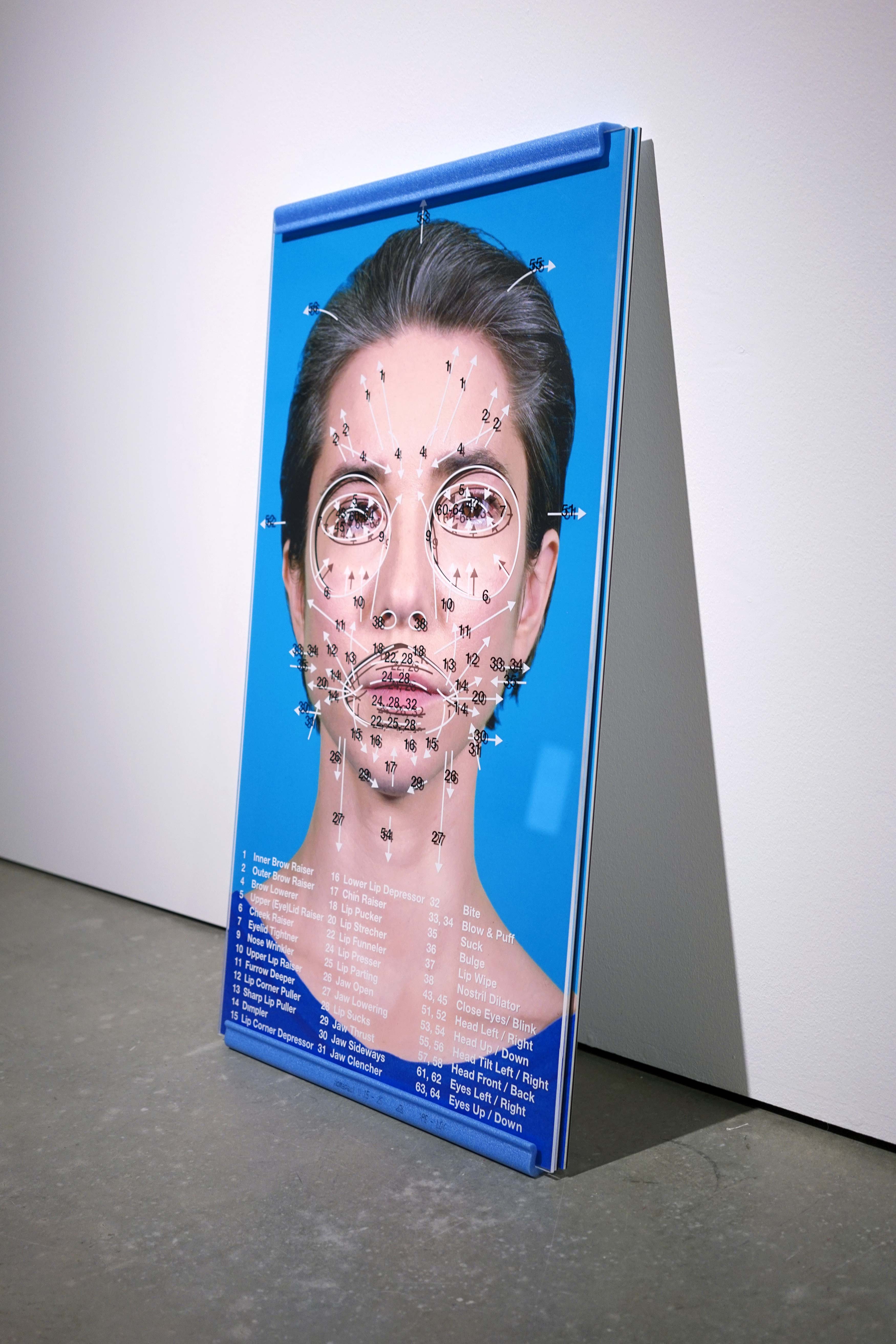
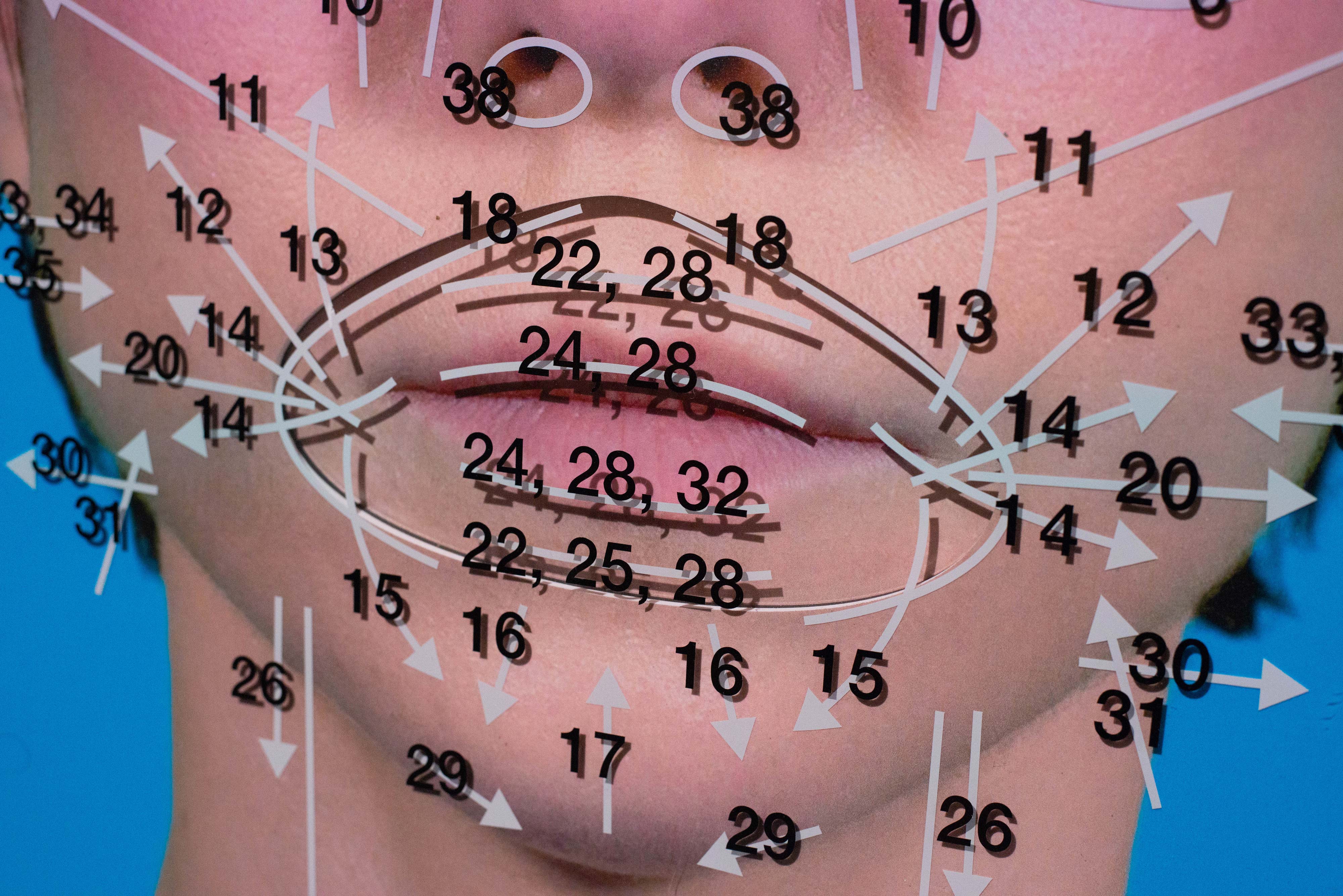
Coralie Vogelaar
Facial Action Coding System, 2018
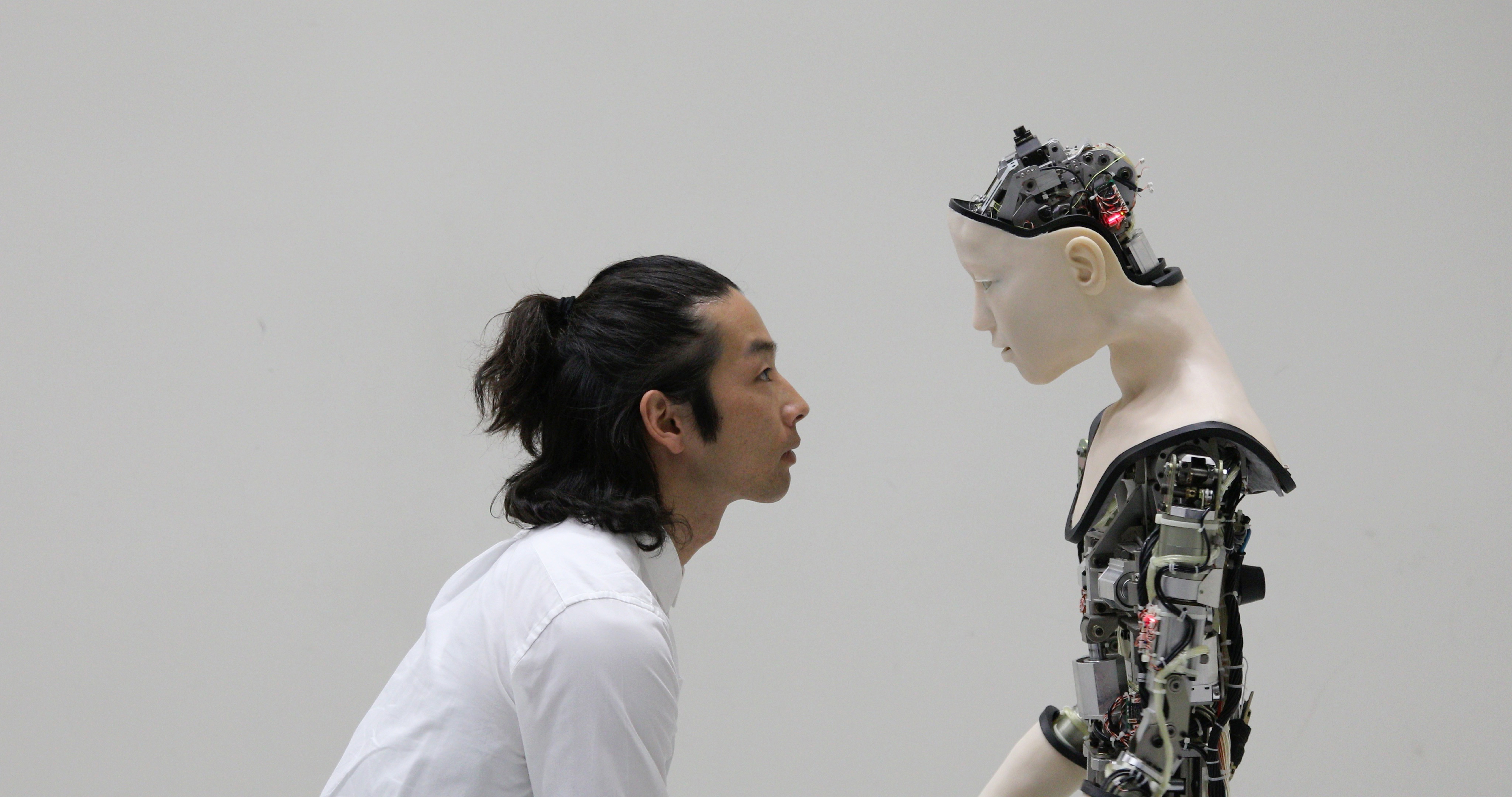
Justine Emard
Co(AI)xistence, 2017

Simone C. Niquille
Elephant Juice, 2020
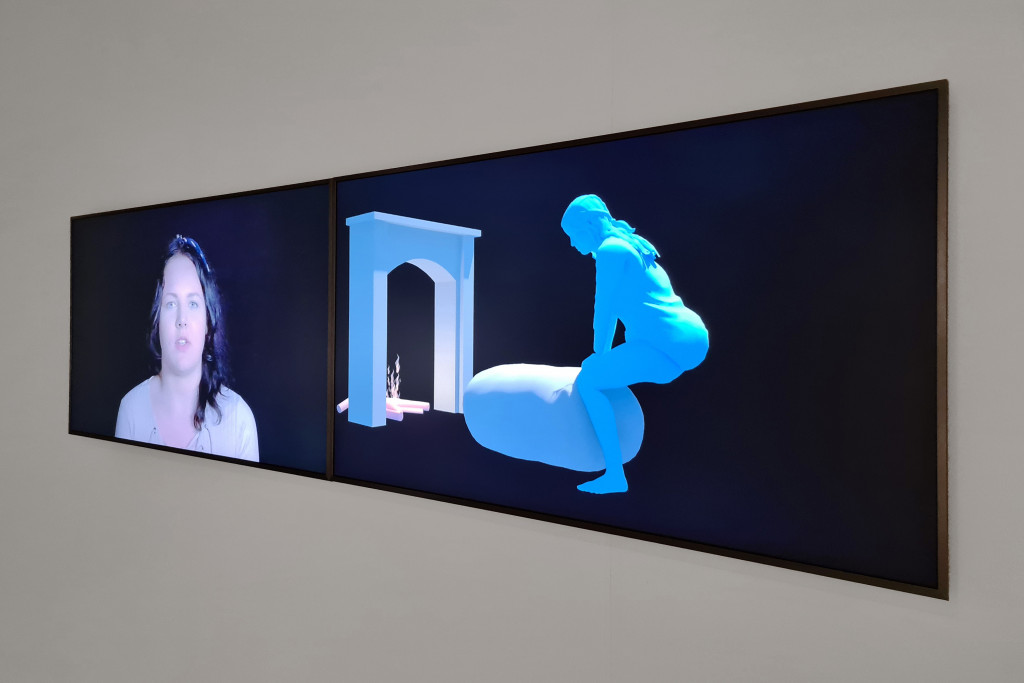
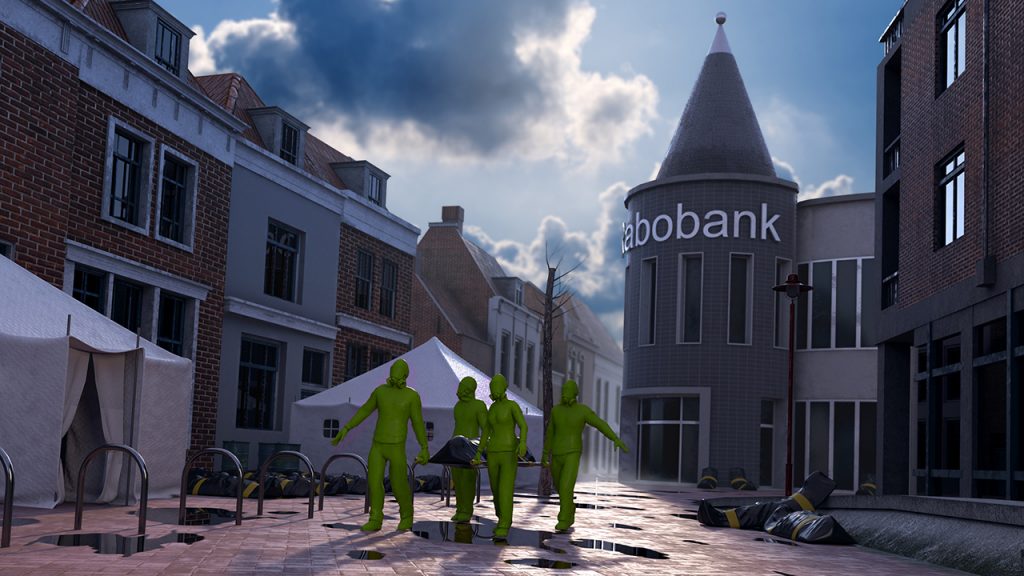
Ed Fornieles
Test Studies, 2017
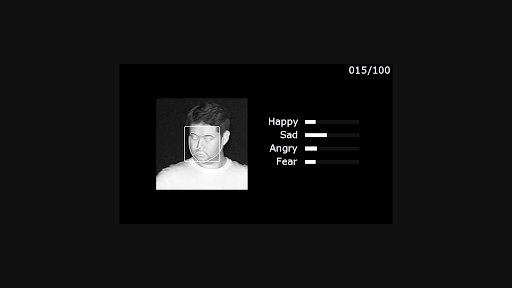
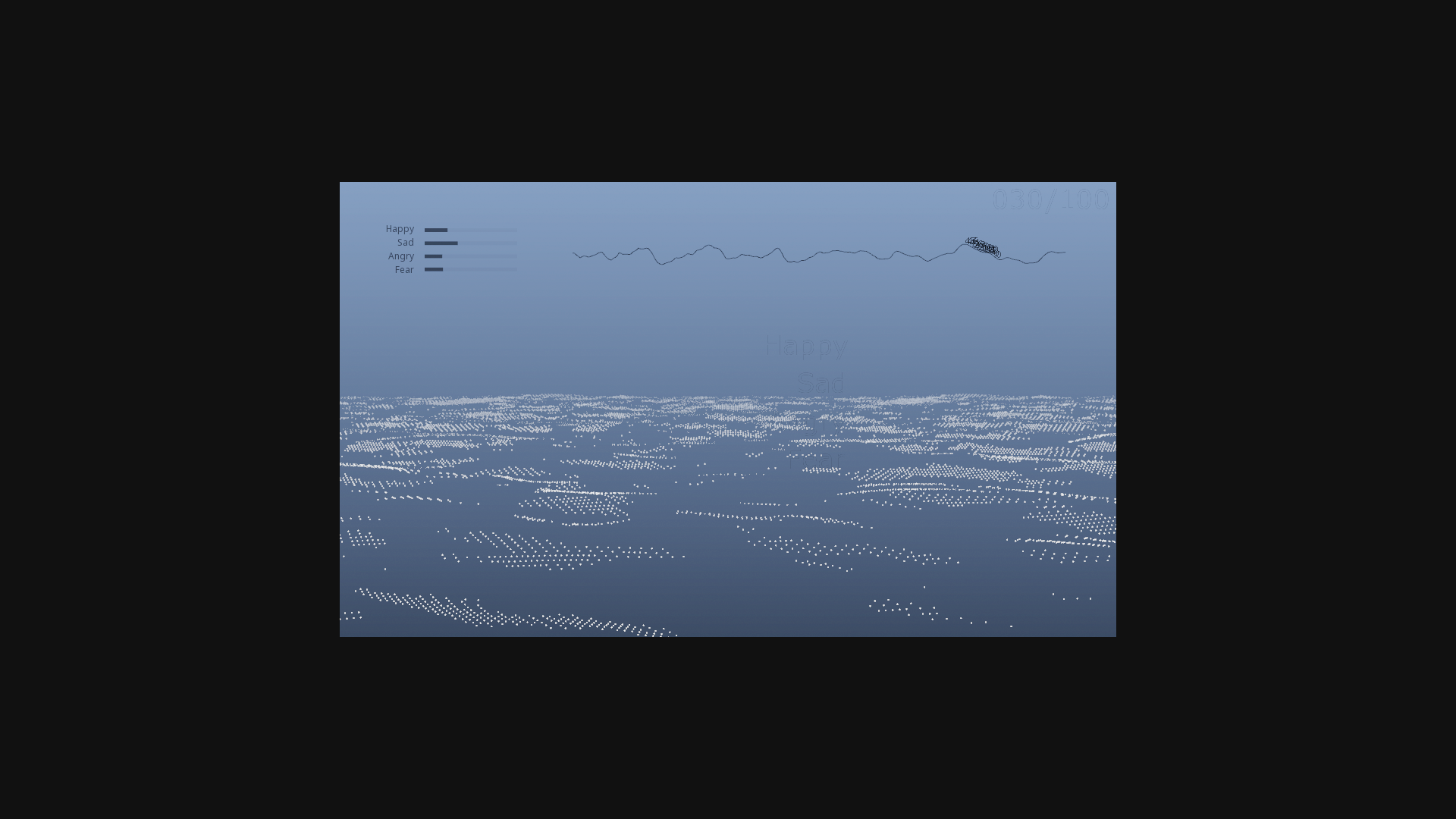

Shinseungback Kimyonghun
Mind, 2019
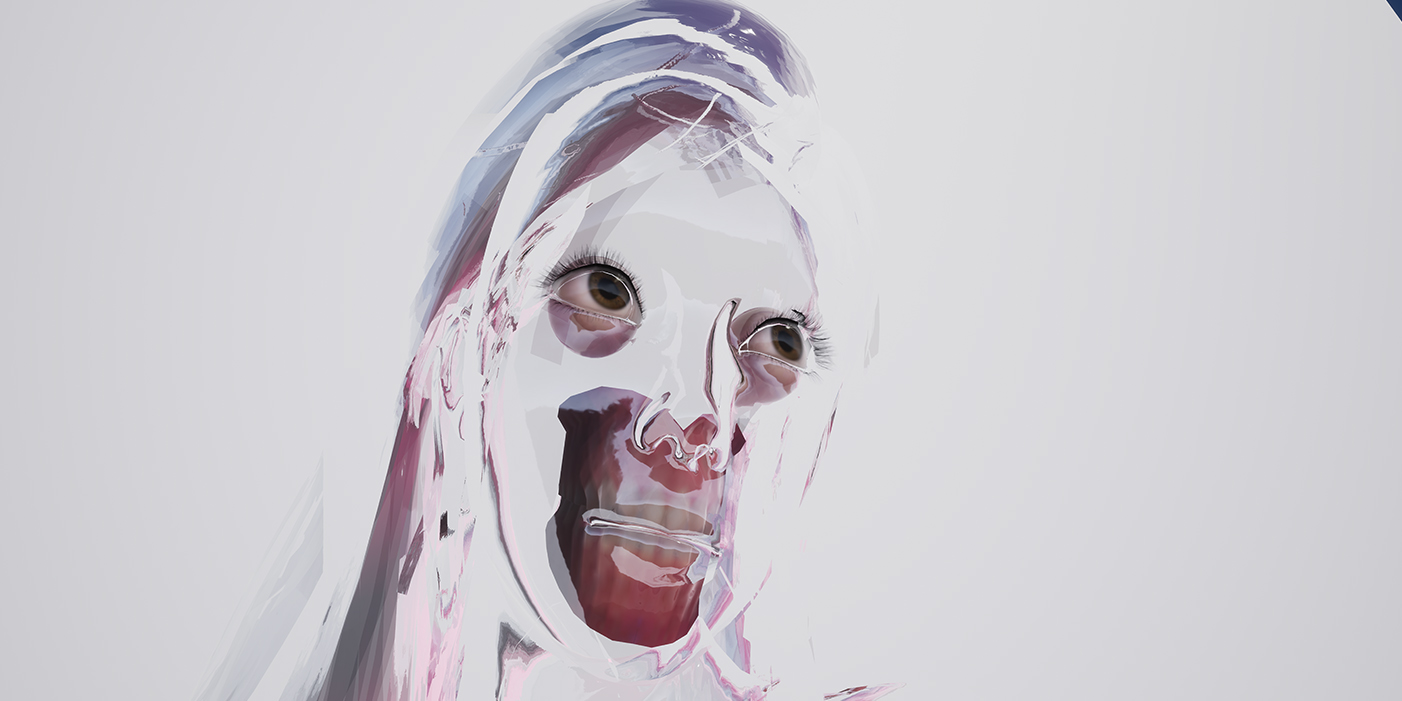
Lorem
Adversarial Feelings, 2019
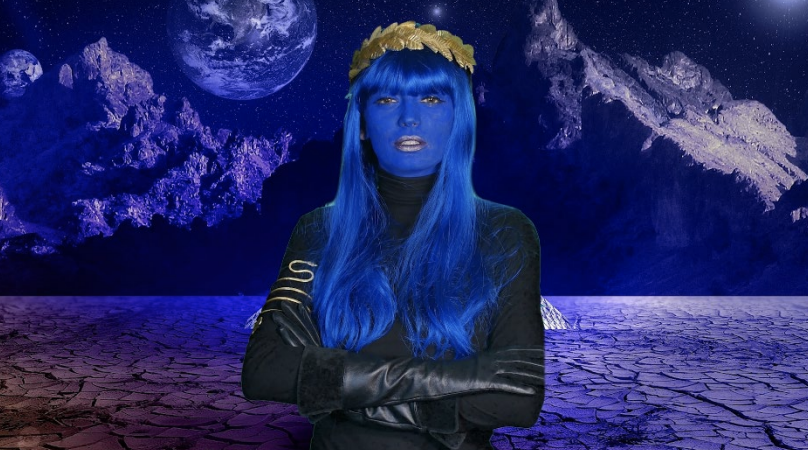
Maria Guta
Commercial Break, 2020




One of Them Is a Human is a conceptual work that presents three androids (human-looking robots) and one human. All four photographs were taken in Hiroshi Ishiguro Laboratories in Japan, founded to promote the research and study of human-like robots based on the ideas of roboticist Hiroshi Ishiguro. Each subject in the photographs has a nearly blank expression, showing very little emotion. The viewer is challenged – given this lack of distinct emotion – to question and try to discover which one might be human. The series shows how, in the act of looking, we relate to images and physical presences by the emotional expressions on faces, by the clues and cues they give us about the person. The portraits make us face the idea that humanity may be on the verge of extinction. We are forced to look squarely at the post-human predicament: that we are replaceable by technology. The android in each portrait has become the mirror of the human viewer’s own soul: the space into which we project our hopes, our fears, our desires and dreams.
Maija Tammi, born in 1985, is a Finnish artist.


Antoine Catala‘s works are characterized by his interest in forms of human communication – how these are changing through the use of new technologies and how emotions are increasingly controlled by the media and used to influence our consumer behaviour. His installation Everything is OKAY: Season 2 consists of a collection of kinetic and pneumatic objects that use technology to express everyday human emotions. Presented are everyday objects – plastic bags, socks or T-shirts – decorated with emojis, as well as a wall panel with the encouraging slogan “Don’t Worry”. Everything is bathed in soft pastel shades that suggest a cheerful atmosphere. A pneumatic system sets the objects in motion. They seem to breathe and then even start singing. Despite the uplifting mantra „Everything is OKAY“, the installation radiates something disconcerting and it is no coincidence that the emoji objects are all wearing a Band-Aid and seem more amazed than okay. Emojis and text messages as current forms of communication are the starting point for Catala‘s questioning of the meaning of human relationships in the digital age. Emojis convey moods and feelings, but can also lead to misunderstandings. Catala deconstructs the bland and hollow phrases of medially suggested happiness and contentment in an ironic and insightful manner.
The French artist lives and works in New York.

With the rapid development of artificial intelligence, computer systems have learned to recognize and interpret human emotions. In
his photo series Happiness is the only true emotion Clément Lambelet tests the ability and efficiency of current algorithms to recognize and identify emotions. For his work
he uses portrait photos from a database that originates from Stirling University in Scotland.
Each participant in the database carries out the „universal human emotions“ identified by American psychologist Dr Paul Ekman – anger, disgust, fear, happiness, sadness, surprise, and pain – and also shows a neutral face. Lambelet selected one facial expression per person for
each emotion and edited these images to make them even more expressive. He cropped them
so that only the face was visible and then let Microsoft‘s Face API, one of the leading algorithms in the field of face and emotion recognition, interpret the images. Happiness was
the only emotion that the system recognized with 100% confidence. AI-based perception is based on pattern recognition. The intelligence of a system derives from the datasets it has
been fed. Accordingly, prejudices and values can be indirectly transferred to such an AI system. In his work, Lambelet shows the weaknesses of algorithmic systems and criticizes
their increasing use in society – from social networks to shopping malls, or in surveillance of urban spaces.
Lambelet, born 1991, is a Swiss artist living and working in Lausanne.


Dani Ploeger’s piece The Grass Smells So Sweet focuses on how technology has always played a role in processing our emotions. One
part of this installation explores writing as a means of representing and describing feelings: A monitor shows a collection of found
texts from Question & Answer forums Quora and Reddit that respond to the question, “How does it feel to be shot in the head?” The answers can be browsed using the scroll wheel of a mouse. The work’s title is taken from an
account of a mock execution written by people who survived (or claim to have survived). Situated in an adjacent room is a VR headset
installed above a patch of grass, which gives access to a simulation based on respondents‘ attempts to describe their experience. An electronic aroma dispenser emits a synthetic scent
of freshly cut grass. The sensation that each body feels when the scenario is played out in
the headset is a crucial part of this installation. It reveals how emotions and the body are intimately interconnected, and how the actual
engagement of the senses is integral to ourfeelings.
The Dutch artist lives and works between Vlissingen (Netherlands), London and Berlin.

Upon entering the exhibition, visitors encounter a set of monitors that show images of people in different scenes further on in the exhibition space. Each “visitor portrait” comes with
a strong emotional statement in text, from “Makes me feel most anxious” to “Makes me feel most sad” or “Makes me feel most bored”. In the exhibition there are several small networked cameras. These continually collect
images that are then collectively analysed to determine the emotions of everyone in the space, relative to the artistic works and to other visitors. Vibe Check updates these images
in realtime as visitors move through the space. Utilizing facial recognition to track visitors across rooms, the system analyses the degree to which each visitor makes others feel various emotions, based on the facial expression
and gestures of the people around them. For example, if the visitor is repeatedly captured surrounded by smiling people, they may be identified as the one that “Makes me feel most
happy”. At the end of the tour they may even find themselves, with the emotional distinction they‘ve earned from the artificial intelligence during their visit. While on one hand Vibe Check
thus heightens our sense of interdependence, it also critically exposes issues of biometric emotion tracking, interpersonal relationship surveillance and social scorekeeping.
The American artist duo lives and works in Los Angeles.


One does not usually associate anything living with a stone, but stone-like creatures, or „specimens“ as Esther Hunziker calls them, speak to us in her video installation Streamers. Decoupled and detached from the world, the 3-D rendered stones appear as something „alien“. The formal austerity and aesthetics of the work, reduced to black and white, stand in stark contrast to the emotionality of the spoken word. The audio material comes from online videos on YouTube in which six people talk about themselves, their feelings and why they want to be on the air online, via live stream. Their outbursts of emotions express a search for identity, authenticity and self-discovery, which they act out in front of a global audience without addressing anyone in particular. The online tirades bear witness to a longing for affirmation and at the same time to the fear of being rejected or judged negatively. The alienation of the individual in a digitally networked world could not be more aptly summed up: It is a world in which we have long since been communicating with objects that have now become „smart“.
The Swiss artist lives and works in Basel.


„A cell is a history, a home, the most intimate of spaces“, according to transdisciplinary artist Heather Dewey-Hagborg. Our genome carries more than just our physical information. Each cell encapsulates who we are; fluidly precise bio-data that are decipherable to great detail. With T3511 Dewey-Hagborg has created a chilling post-genomic love story and experimental documentary in which the commodification of cells and the ubiquitous growth of genomic sequencing services and biobanks is entangled with questions about how relationships, family, and day-to-day life are likely to change in the imminent future. The narrative – based on science fact, not fiction – follows a biohacker who becomes increasingly obsessed with an anonymous donor whose saliva she purchases online. Only 2ml of his body fluid is enough to sequence a full profile. And so the protagonist learns the donor is 46 years old, has dark brown eyes, a full head of brown hair and a few freckles, he probably tosses and turns in bed, seems to enjoy a savoury midnight snack and appears to go for hour-long runs. Using some smart digital and biometric research methods she finds out more and more – and by the time she knows all of him without meeting him in real life, she realises she is trapped in the surveillance system she usually criticizes. It is this being torn between feelings and facts, between knowing and the unknowable, that renders T3511 a haunting story as well as a closer look into the Pandora‘s box of what the entanglement of emotion and technology may entail.
The American artist lives and works in New York.


In the computer animation Terminal Beach a furry KUKA robot arm is chopping down what may be the last tree on earth. The piece by the artist group Troika is partly inspired by J.G. Ballard’s short story of the same name and by a re-reading of Industrial Society and its Future – the manifesto of “Unabomber” Theodore John Kaczynski. While the text is highly controversial for its right-wing positions, it also points out the dangers of AI, showing that humanity is on track to becoming subservient to its own creation, and relegated to a life of meaningless idleness. Troika were struck by what they see as an explicit link between these ideas and the quest for efficiency and profit of late capitalism, the rise of automation, and the ecological crisis we are facing, whilst our obsession for industrial growth will only accelerate the destruction of our environment. Hence the desolation and the central figure of a robot, which may one day replace human labour because it is conveniently cheap and emotionless. With the aid of motion capture, Troika trained the robot featured in the animation, digitalising the action of cutting a tree with an axe. In a further step, the robotic arm was covered with fluffy, long fur, to elicit a complex emotional response between horror and attraction. In this futuristic end-time scenario, the robot completes what mankind began long ago – the destruction of our planet. In a world facing the ravages of climate change, with people on one extreme feeling fear and on the other apathy, the piece triggers new complex emotional responses that we can’t yet name.
Troika is a London-based collective founded in 2003 by Eva Rucki, born 1976 in Germany, Conny Freyer, born 1976 in Germany, and Sebastien Noel, born 1977 in France.


Cécile B. Evans is an artist whose practice is focussed on how we value emotion in contemporary society and the impact of digital technologies, which change the way we process and perceive emotions. This video was originally shown in a sculptural installation alongside three 3D-printed mundane personal items – a comb, a screwdriver, and a pair of scissors – modes of technology with relative immunity to updates and upgrades. In the video How Happy a Thing can be, which takes its title from Rainer Maria Rilke’s 9th Duino Elegy (1923), the objects (a comb, a screwdriver, and a pair of scissors) are computer animated and have a new digital life, performing a choreography that implies they are being pushed to their limits, although these are modes of technology with relative immunity to updates and upgrades. The video begins in an anonymous luxury bedroom suite, with the screwdriver standing in for a lampshade, the scissors luxuriating in a bath, and the comb sitting on the side with hair, seeming weirdly alive. In this surreal world, sinister elements such as blood on the scissors and then a rubble-strewn wasteland transform a surreal story into one of impending doom as the scissors dance through the pain of an empty existence and an unseen singer laments “I gave you all the life I got. I gave you more than I could give”. Inspired by tabloid breakdowns and mediatised disasters, the artist explores the physicality of emotion as part of the human condition, ironically through the vehicle of three objects that are imbued with a life of their own.
Cécile B. Evans, born in 1983, is an American-Belgian artist living and working in London.


The installation Synthetic Seduction explores the borderlines between the real and virtual worlds. The two Danish artists are questioning the ways in which technology affects social behaviour and emotions while embracing it as a source of inspiration. The installation consists of two pieces. Marie Munk’s Skin to Skin, an organic silicon sculpture, looks like umbilical cords, navels, chunks of human substance and organs. However, once sat upon it turns into a sofa that squeezes and responds to whoever is sitting on it, demonstrating a physical intimacy that induces different feelings in each person who experiences it. From this vantage point, the visitor can watch the film Foreigner by Stine Deja. It shows an apparently newborn android in an operating room, singing “I want to know what love is” (the 1984 hit song by the pop group Foreigner) in order to teach himself emotion via this iconic cultural musical touchstone. The video satirises the ways in which machine learning recognizes patterns and repeats them regardless of what those patterns are, while being a world away from actually identifying or knowing “what love is”. Stine Deja was born in Denmark in 1986 and currently lives and works in London.
Marie Munk was born in Denmark in 1988 and currently lives and works in Copenhagen.

Lucy McRae describes herself as a body architect and creates sensitive installations, performances and films that take an intuitive embodied stand against our ever more tech dominated and algorithmically driven mechanic reality. Her new work Solitary Survival Raft can be seen as a descendant of the Titanic at the beginning of the 21st century or even as a reference to Gericault‘s Scene de Naufrage, better known as The Raft of the Medusa. But here we don‘t see a group of wealthy travellers seeking to build an even better life on another continent, nor do we see a bunch of cannibalistic colonial sailors – rather, we encounter a raft for a single individual enduring the waves of a hyperreal disruptive time. For the person within the raft, the air that will periodically be pumped inside will make them float in their code orange second skin. As the air is pumped out, soft fabrics will cling tightly to the body, enveloping it in a continuous inhalation and exhalation. In times of a pandemic, in which contact is only possible to a limited extent, the technology becomes a lifeline.
The british born artist lives and works in Los Angeles.
Every Thursday at 5:30 pm and Sundays at 4:30 pm the work is performed.

Having technology conquer the art of emotions is a quest many feel to be unattainable. Nevertheless AIs are learning, and learning fast, to compose and paint and write. This is where the interactive installation by Seokyung Kim ties in. Encyclopedia of Emotion plays with poetry and learns to speak with “human” emotion – meanwhile exploring how artificial intelligence deals with linguistic expression. According to Kim, robots are generally considered to be cold and impersonal. But that’s how we have made them. She wants to prove that we can teach computers to be responsive by feeding them with romantic literature and personal notes. Encyclopedia of Emotion – which consists of two screens hanging on the wall like an opened book, with one screen connected to a keyboard and the other to an AI – operates at the junction between technology and poetry. It asks the audience to submit verbal expressions of joy, anger, sadness or surprise. Added to the database filled with literature inside the computer, these personal expressions educate the AI, allowing it to start creating its own metaphors and express its feelings in return. Over time the installation speculates on a future archive, due to the ever-changing content that results from collaboration between humans and machines.
The Korean born artist lives and works in Rotterdam.


In Renderlands, the Indian employee of a render farm falls in love with a beautiful digital actress. He meets her at night after work to romantically roam the dark streets of a city that he has cobbled together for them from scavenged VFX movie models and the leftover 3D game assets. Day by day he spends hours endlessly rotoscoping, rendering and compositing her into blockbuster films. He has lovingly airbrushed across every pore on her face, every strand of her hair as he 3D-models her silhouette, scene-by-scene, frame-by-frame. With Renderlands, Liam Young has build an alternative dream world from real digital fragments of the film and game industries, loading them with emotional potential and drama. The result is a portrait of a contemporary Utopia that exists in the thickness of the screen, a virtual city that stretches from Hollywood to downtown Bangalore, a world of demolished landmarks, drowned streetscapes, alien invasions, synthetic actors and outsourced dreams.
The Australian artist calls himself a speculative architect. His works operate in the spaces between design, fiction and futures.


Facial recognition software meanwhile also analyses our emotions by deconstructing our facial expressions into temporal segments that produce an expression. These segments, based on the tension in the 44 muscles in our face, are called Action Units, and have been extensively studied and developed into the Facial Action Coding System by American psychologist Paul Ekman. This system separates them out into certain percentages of six basic emotions: happy, sad, angry, surprised, scared and disgusted. Based on this system Vogelaar asked the actress Marina Miller Dessau to train all her facial muscles independently so that her face can express every emotion imaginable.
Not only does the face of Miller Dessau, with a scheme of all possible muscle movements laid over it, reveal its complexity; it also reveals how a computer can analyse our emotions. For Vogelaar it is important to explore the intersection of computer and human interaction, working with algorithms in their irrational sense – not solving a particular problem but creating new ones. “Each algorithm has its own internal logic”, Vogelaar states, “but in the real world it is never rational or objective, and we should not try to make it so”.
The Dutch artist is based in Amsterdam.

In her video installation Co(AI)xistence, Justine Emard lets the Japanese dancer Mirai Moriyama meet the robot Alter and interact with him in a pas de deux. Animated by artificial intelligence, the robot reacts to the dancer‘s movements. Its neural network and sensors enable it to react to the unexpected. In her work, Emard explores the new relationships that develop between our lives and advancing technology. She shows us communication between human and machine in poetic and visually impressive images. We are touched when the machine, in its exploration of the environment, seeks contact with the hands or makes guttural sounds. Human and robot conduct a dialogue using the signals of their respective languages, both physically and verbally. The machine learns from the encounter with the dancer, becomes a „mirror of ourselves“, as the artist says. In doing so, the machine is deliberately not passed off as a human being; its technoid inner life is partially exposed and reveals its mechanical construction – which can be shocking, frightening and beautiful at the same time.
Justine Emard, born in 1987, is a French artist. She lives and works in Paris.

In the video installation Elephant Juice we follow a character preparing for an upcoming automated job interview in a bathroom. In this novel recruiting process, interviews are held in front of a candidate‘s own webcam. Once recorded, the video file is analysed by computer vision software, which evaluates the applicant‘s facial expressions for desirable qualities such as trustworthiness, compatibility and diligence. Such examination translates facial expressions into emotions and depends on a mapping of muscle movements. The Facial Action Coding System (FACS) is widely referred to as an underlying parameter for such applications. It divides the human face into action areas that are labelled and subsequently assigned emotions. With the commodification and categorization of the deeply personal and delicate matter of emotions, it is crucial to challenge the limits of objectivity and the risks of globally adapted perception systems. By rendering the world through a lens of seemingly objective computer vision, intimate realities are at stake. Modelled after philosopher Thomas Nagel‘s essay “What Is It Like To Be A Bat?”, the bat narrator in Elephant Juice paraphrases this passage to ponder the probability of human-built computer vision systems ever surpassing their maker‘s subjective worldview. The words Elephant Juice are a common misreading of I Love You by lip-reading software, aptly capturing the narrow room for error between the deeply emotional and the absurdly poetic.
The Swiss artist lives and works in Amsterdam.


In his works, Ed Fornieles often addresses the fluidity between offline and online realities and the resulting effects on the formation of our identities. His video installation Test Studies is based on a role-playing game that he invented and that is staged with four other players. All participating players experience several simulations of post-apocalyptic scenarios – from pandemics to alien invasion and apocalypse. In the video we see the four young players describing their actions as well as their feelings and emotions during the role-playing game. They are contrasted with animated scenes of the crisis scenarios. The role-play opens up spaces of possibility in which the protagonists can be different „versions“ of themselves. In the game they immerse themselves completely in other realities and in other „personalities“ and experience extreme, exceptional situations. They talk about fears, shock, sadness and resignation, and describe how their emotions often feel more real in role-playing than in actual life.
The British artist Ed Fornieles lives and works in London.



Shin Seung Back and Kim Yong Hun, aka the collective Shinseungback Kimyonghun, have long been interested in the boundaries and definitions of “humanness”, as evidenced by their many experiments with AI and facial recognition software. Their interactive installation Mind creates a space where people’s feelings come together as a sea. A surveillance camera at the far back of the installation analyses the facial emotions (Happy, Sad, Angry, Fearful) of people who enter into the space where seven ocean drums are arranged in a half-circle on the floor. These ocean drums generate the sounds of waves, based on the average emotions of the latest 100 faces that have come into the space to see and experience the installation. Two small monitors on the wall show the facial emotion analysis process and the graphic simulation of the current sea. Mind beautifully connects humans and nature, interwoven through technology.
Shinseungback Kimyonghun is a Seoul-based artistic duo.

In AI neural networks are widely used nowadays to detect and classify emotions, mainly in order to map and influence user behaviours. But what happens when we use machine learning to perform human feelings? Adversarial Feelings is an attempt to inform non-human intelligence with emotional data sets and to build an algorithmic intimacy through intelligent devices. Focusing on the emotional side of algorithms, the work employs new generation neural networks to produce text, experimental music and video. A dataset focuses on the concept of spiritual machines and on the relationships between language and creation. In Adversarial Feelings, neural networks are trained to classify and then produce a sometimes really arbitrary catalogue of “states of consciousness” from text, sound and images. The goal is to observe the subjective/affective dimension from the outside, to speak about human emotions as perceived by non-human eyes. Transposing them into a new form enables Lorem to embrace the fractured experiences of modern life.
Lorem is an AI-driven multidisciplinary project by Italian musician and visual artist Francesco D‘Abbraccio. He lives and works in Brescia.

Maria Guta based her „Commercial Break“ on other projects she developed for the fictitious company Solarnet, situated in a future society in which memories of the past and feelings in general are strictly forbidden. At the same time, Solarnet enables virtual identities in which we can travel through time as virtual tourists, change skin and teleport from one space to another. „Commercial Break“ functions as the advertising trailer for this fictitious company and shows the unlimited potential of virtual travel and change. As the protagonist, Guta stages herself in various female stereotypes, which – ironically – she simultaneously targets. Her work refers to the constant pressure of personal staging and self-representation in the social media of our contemporary digital society. We are both the actors in and directors of our own cyber-identities. Feelings and emotions are staged, as are clothing and personality. With wit and self-irony Guta exposes the stereotypes of a „perfect self“ in virtual space.
Maria Guta, born 1983 in Bucharest, is a Romanian artist based in Neuchatel.